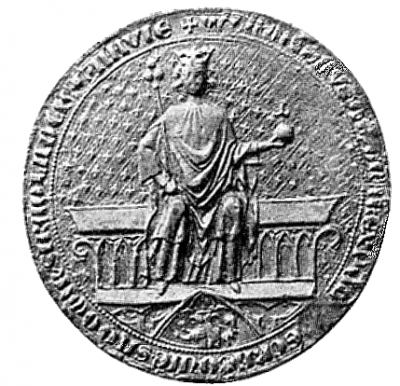The period of rule by the Piast dynasty between the 10th and 14th centuries is the first major stage of the history of the Polish state. The dynasty was founded by a series of dukes listed by the chronicler Gallus Anonymous in the early 12th century: Siemowit, Lestek and Siemomys. It was Mieszko I, the son of Siemomys, who is now considered the proper founder of the Polish state at about 960 AD. The ruling house then remained in power in the Polish lands until 1370. Mieszko converted to Christianity of the Western Latin Rite in an event known as the Baptism of Poland in 966, which established a major cultural boundary in Europe based on religion. He also completed a unification of the Lechitic tribal lands that was fundamental to the existence of the new country of Poland.Following the emergence of the Polish state, a series of rulers converted the population to Christianity, created a kingdom of Poland in 1025 and integrated Poland into the prevailing culture of Europe. Mieszko's son Bolesaw I the Brave established a Roman Catholic Archdiocese in Gniezno, pursued territorial conquests and was officially crowned in 1025 as the first king of Poland. The first Piast monarchy collapsed with the death of Mieszko II Lambert in 1034, followed by its restoration under Casimir I in 1042. In the process, the royal dignity for Polish rulers was forfeited, and the state reverted to the status of a duchy. Duke Casimir's son Bolesaw II the Bold revived the military assertiveness of Bolesaw I, but became fatally involved in a conflict with Bishop Stanislaus of Szczepanw and was expelled from the country.Bolesaw III, the last duke of the early period, succeeded in defending his country and recovering territories previously lost. Upon his death in 1138, Poland was divided among his sons. The resulting internal fragmentation eroded the initial Piast monarchical structure in the 12th and 13th centuries and caused fundamental and lasting changes.
Konrad I of Masovia invited the Teutonic Knights to help him fight the Baltic Prussian pagans, which led to centuries of Poland's warfare with the Knights and the German Prussian state.In 1320, the kingdom was restored under Wadysaw I the Elbow-high, then strengthened and expanded by his son Casimir III the Great. The western provinces of Silesia and Pomerania were lost after the fragmentation, and Poland began expanding to the east. The period ended with the reigns of two members of the Capetian House of Anjou between 1370 and 1384. The consolidation in the 14th century laid the base for the new powerful kingdom of Poland that was to follow.
Władysław I Łokietek, in English known as the "Elbow-high" or Ladislaus the Short (c. 1260/1 – 2 March 1333), was King of Poland from 1320 to 1333, and duke of several of the provinces and principalities in the preceding years. He was a member of the royal Piast dynasty, the son of Duke Casimir I of Kuyavia, and great-grandson of High-Duke Casimir II the Just.
Władysław I inherited a small portion of his father's domain, but his dominion grew as some of his brothers died young. He unsuccessfully tried to incorporate the Duchy of Krakow (the Seniorate Province) in 1289, following the death of his half-brother Leszek II the Black and the withdrawal from contention of his ally Bolesław II of Masovia. After a period in exile during the rule of Wenceslaus II, Władysław regained several duchies and then Krakow in 1306 when Wenceslaus III was murdered. He temporarily took control of part of Greater Poland after the death of his ally Przemysł II, lost it, and then subsequently regained it.
Władysław was a skilled military leader, but also an administrator; he conquered Gdańsk Pomerania, and left it to familial governors. For the defense of this territory, he turned to the Teutonic Knights, who then demanded an exorbitant sum or the land itself as an alternative. This led to an extended battle with the Knights, which was not resolved after either a papal trial or Władysław's own death. Perhaps his greatest achievement was gaining papal permission to be crowned king of Poland in 1320, which occurred for the first time at Wawel Cathedral in Krakow. Władysław died in 1333 and was succeeded by his son, Casimir III the Great.

 English
English  español
español  français
français  português
português  русский
русский  العربية
العربية  简体中文
简体中文 
